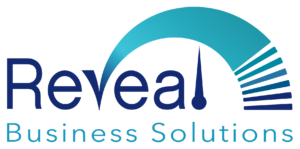Understanding Profitability
By: Valerie Briley, CPA, Founder & Chief Business Driver, Reveal Business Solutions
It’s universally understood that if a business isn’t profitable, it can’t survive. Despite that obvious truth, many business owners don’t have a clear picture of their own company’s profitability. If you don’t know what’s driving profits, it’s harder to grow your business.
The answer can be found in your financial data, but for the data to be useful, you need good accounting processes in place to ensure accuracy. If you own a small to medium-sized business and would like to better understand what’s behind your profitability, here are a few things to keep in mind.
Clean Chart of Accounts
Your chart of accounts (COA) is an organizational tool for your business finances that should provide an understandable breakdown of every transaction during a specific time period. A well-managed COA is the key to understanding all the financials for your business and can provide amazing insights into the profitability of every product and service you offer. In order to do this, however, all the transactions listed in the COA must be entered correctly. Too often transactions are recorded without rhyme or reason, which undermines your ability to access the data you need to understand what’s driving profitability.
Grouped Transactions
Many businesses record all their income in one account titled “Income” – which doesn’t tell you very much if you earn income from multiple products or services. By creating separate accounts or classes for each income stream, it’s possible to see how much revenue is generated for individual products and services. The same is true for expenses, which should be categorized by operating activity so you can see the cost associated with each product or service. We refer to this as adding dimensions, where we group or tag attributes to transactions to be able to slice and dice the data using different dimensions. The magic happens when you bring it all together in financial reports that reveal the true profitability for each income stream.
Correct Classification
Every transaction must be classified, which involves identifying and separating into different categories. For instance, if it’s an expense, it might be classified as a cost of goods sold, a selling expense or an overhead cost. Classifying transactions correctly, and with adequate supporting detail, is another important component for understanding profitability.
Accrual vs. Cash Basis
Most business owners operate on a cash basis because it’s the primary basis for tax preparation for small business. The problem is that cash basis accounting doesn’t provide a good alignment of revenue and expenses. For instance, it may show a big profit when you just haven’t paid your bills yet. To understand profitability, accrual basis accounting is a better option because it simultaneously recognizes business revenue and related expenses at the time they are generated, not when money actually changes hands. As a result, accrual basis provides a more accurate picture of your net income.
Accurate Accounting is a Good Investment
There is an art to accounting which involves knowing how to correctly record, classify and summarize financial transactions to reveal the true financial status of a business. That level of expertise is a worthwhile investment because good accounting procedures generate the insight you need to increase profits and grow your business.
If you’d like to know what’s driving your profits schedule a Discovery Call with our team. We can help you get a true picture of your business finances so you have the information necessary to make informed business decisions.
